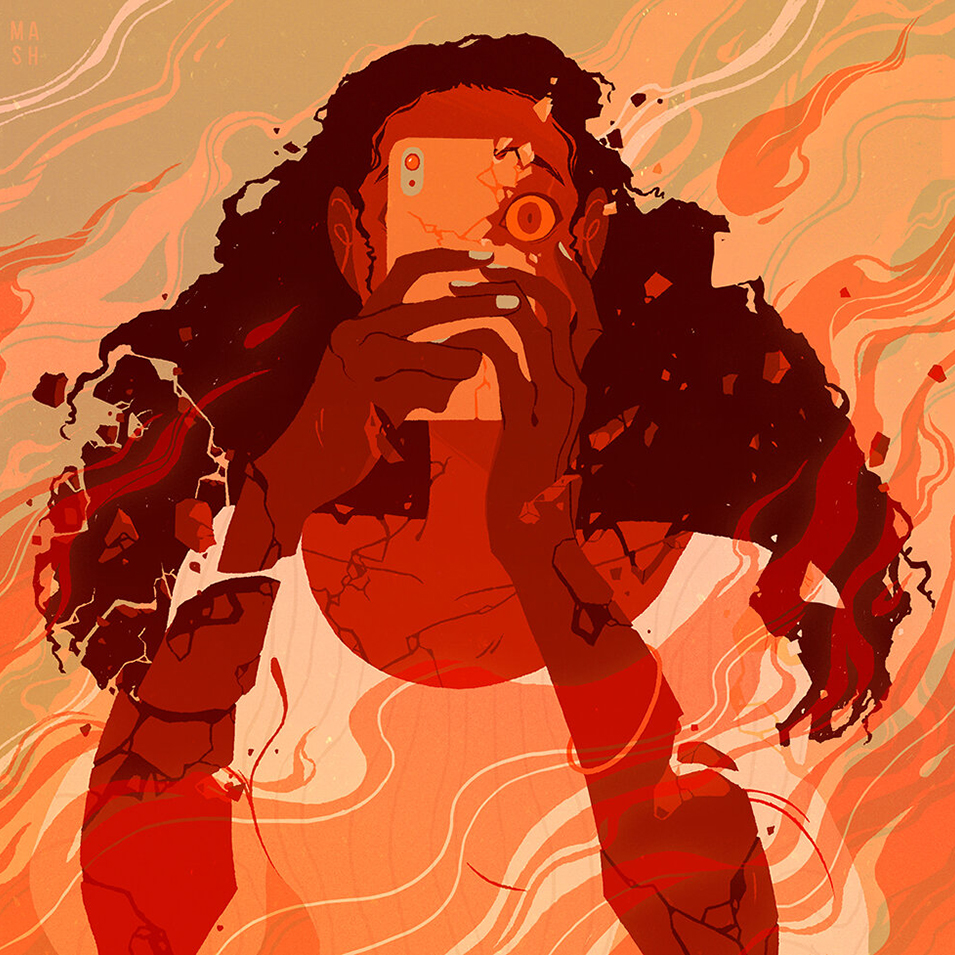
Before social media, the average person had about 10-20 close relationships and 150 other relationships max, but according to statistics from 2014, since the creation of social media, that number has expanded to 338 to include the average number of online “friends”.¹ Simply because our access to people’s life highlights has increased dramatically via social media, we are more susceptible to social comparison than ever before. In a 2019 study, researchers investigated how passive scrolling through Facebook, Instagram, Twitter, and Snapchat relates to social comparison, fear of missing out (FoMO), and depressive symptoms and self-perceptions. By surveying 717 students using likert scales, they found passive browsing of social media does in fact predict social comparison. Social comparison is linked with increased levels of FoMO, and like dominos falling, it then increases the likelihood of lower self-image, lower self-worth, and increases likelihood of depressive symptoms.²
This probably comes as no surprise because we know most of social media is fake, or at least an inaccurate representation of people’s lives. It affects the way we see our appearance because there’s no way of knowing for sure what images are edited. It also raises the bar for material wealth and makes us question if we have enough by flooding our feeds with brand sponsored vacations and subtle product placements. Social media rewards those who buy into the system and present the most fantastical parts of their lives even if it's all fabricated. Simply scrolling Facebook to see what old friends are up to can be a little depressing too if users feel their lives can’t compare. The next time you open any social media app, just remember you’re living a perfectly ordinary life and that’s most people’s reality.
Although social media can be inspiring and provide an effortless way to communicate with friends, it also has the potential to distract us from being productive and creative. With constant notifications and endless feeds, it can be hard to enter a state of flow in which you’re fully focused and immersed in a task. In the video below, filmmaker Matt D’Avella interviews author Steven Kotler on flow and why it’s so important for our happiness.
This week I want you to deactivate all social media accounts and enable yourself to enter states of flow— and yes I’m being serious. Don’t panic, you will survive. I know it’s hard to part ways even for a little while, but I’m here to walk you through the process.
Apps like Instagram and Tiktok operate on highly accurate algorithms that can predict which content will keep you engaged the longest. To ensure you don’t get addicted to these apps again once the week is over, we need to trick the algorithms into showing you uninteresting content. To do this, just search hashtags and content you feel neutral about and like a few posts until you see a change in your explore pages. For example, I liked posts of cute animals and nature, content that makes me smile, but not addictive enough for me to stay on the apps.
Really evaluate if the people you’re following provide you value. Are those Instagram models inspiring, or are they lowering your self-esteem? Do you really need to follow someone you knew in elementary school but haven’t talked to in 8 years? Probably not, right? Unfollow anyone who doesn’t bring you joy, connection, knowledge or value of any kind (but maybe keep select schoolmates and coworkers for networking purposes).
I have a feeling most of us communicate with friends and family primarily through social media apps because we can send memes and share posts easily. They’ll worry about you if they can’t find your accounts, so just let your closest ones know you’ll be taking a social media break to boost productivity and creativity (and please don’t disappear as a test to see if anyone will notice you’re gone! It’s not worth finding out).
Make sure you’ve got your passwords written down somewhere and then deactivate. Uninstall the apps too so you’re less tempted to open your accounts again.
Lastly, download blocking apps that’ll cause you to be so bored you’ll have no choice but to do something, anything! I use Cold Turkey Blocker on my laptop and AppBlock for my phone, both of which are free, but there are dozens of other apps just like them if they aren’t compatible with your devices. These apps block sites and apps of your choosing within a time range of your choosing.
Some examples of sites that might distract you:
• Online shopping sites
• Video, TV & Movie sites
• Sites that let you download content to watch
• Photo content sites like Pinterest or Deviantart
• Gaming sites
• Blogs
You might think none of these have the potential to distract you long term, but once social media is out of the picture, you’d be surprised by the things you turn to when you’re bored out of your mind.
After the week is done, be mindful of your mood and productivity levels. Do you feel accomplished and proud? Do you feel passion for anything you did distraction free? I also want you to consider making some long term changes to how you use social media from then on. Maybe creating a separate account just to maintain connections with a handful of close friends on Instagram would be beneficial. You can switch between two accounts, but primarily use the close friends account. This is referred to by Gen Z as a finsta account meant for private circles, which is separate from their “public persona” accounts.